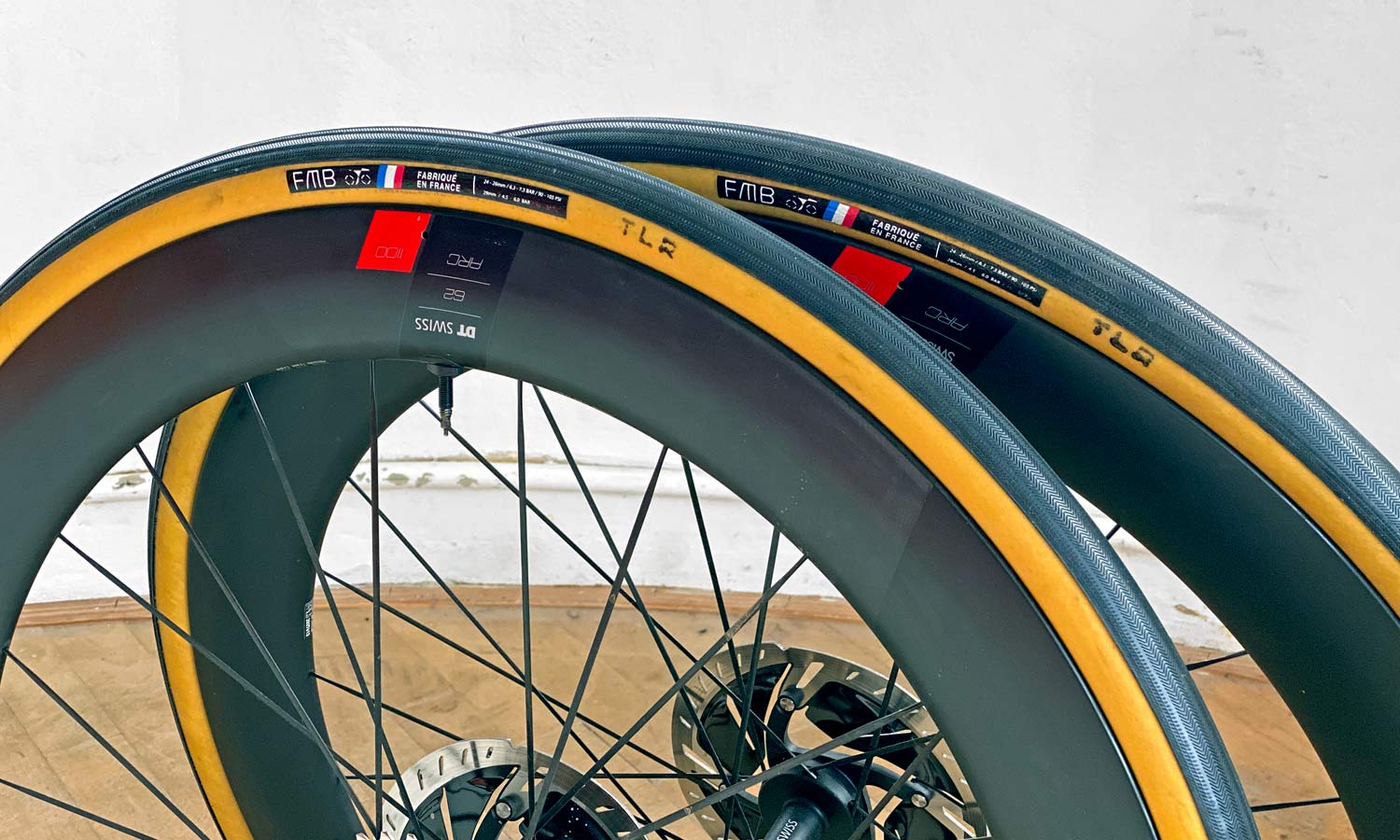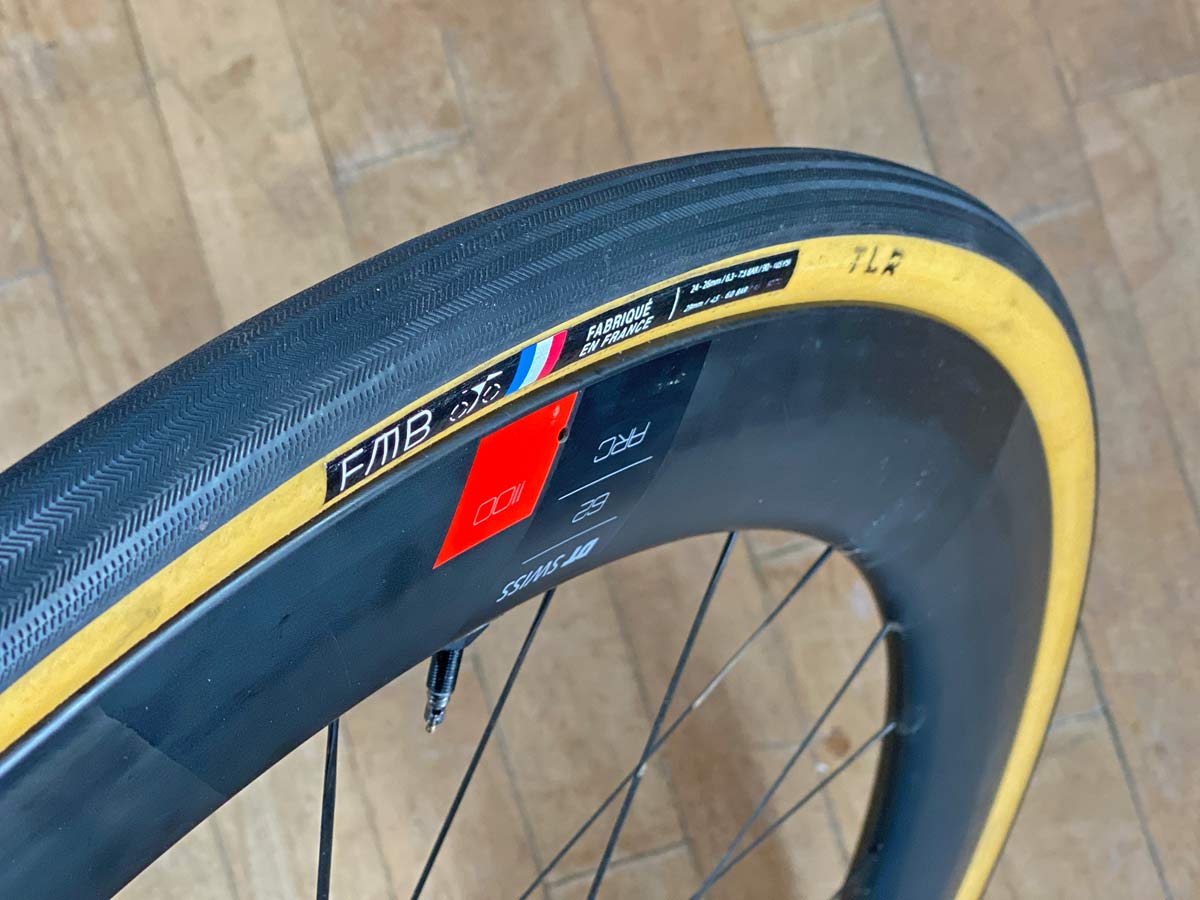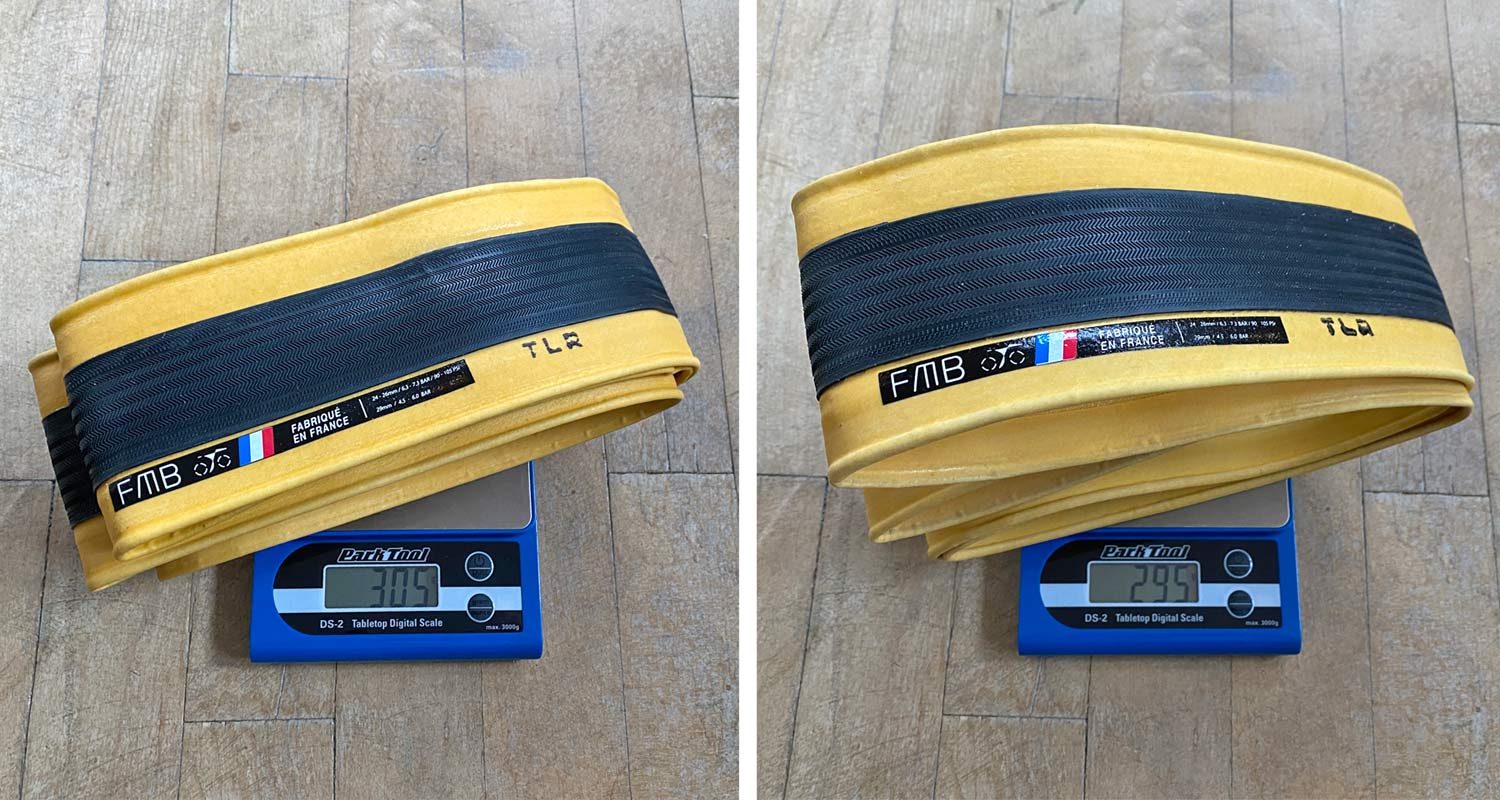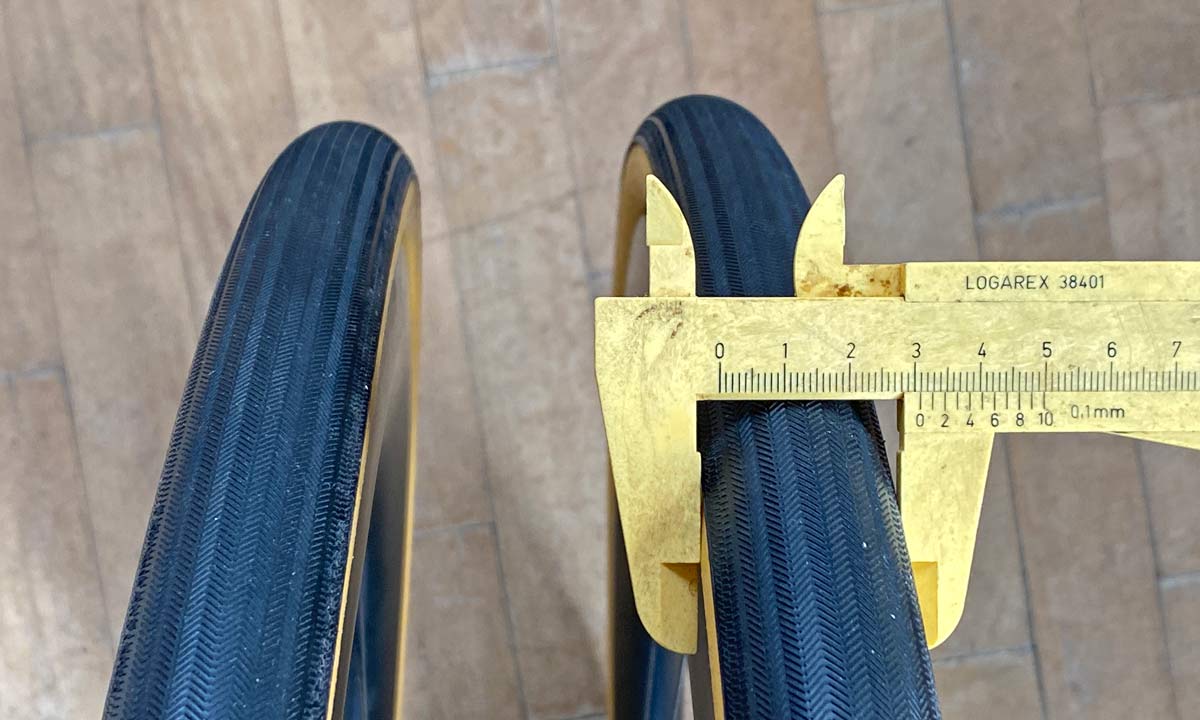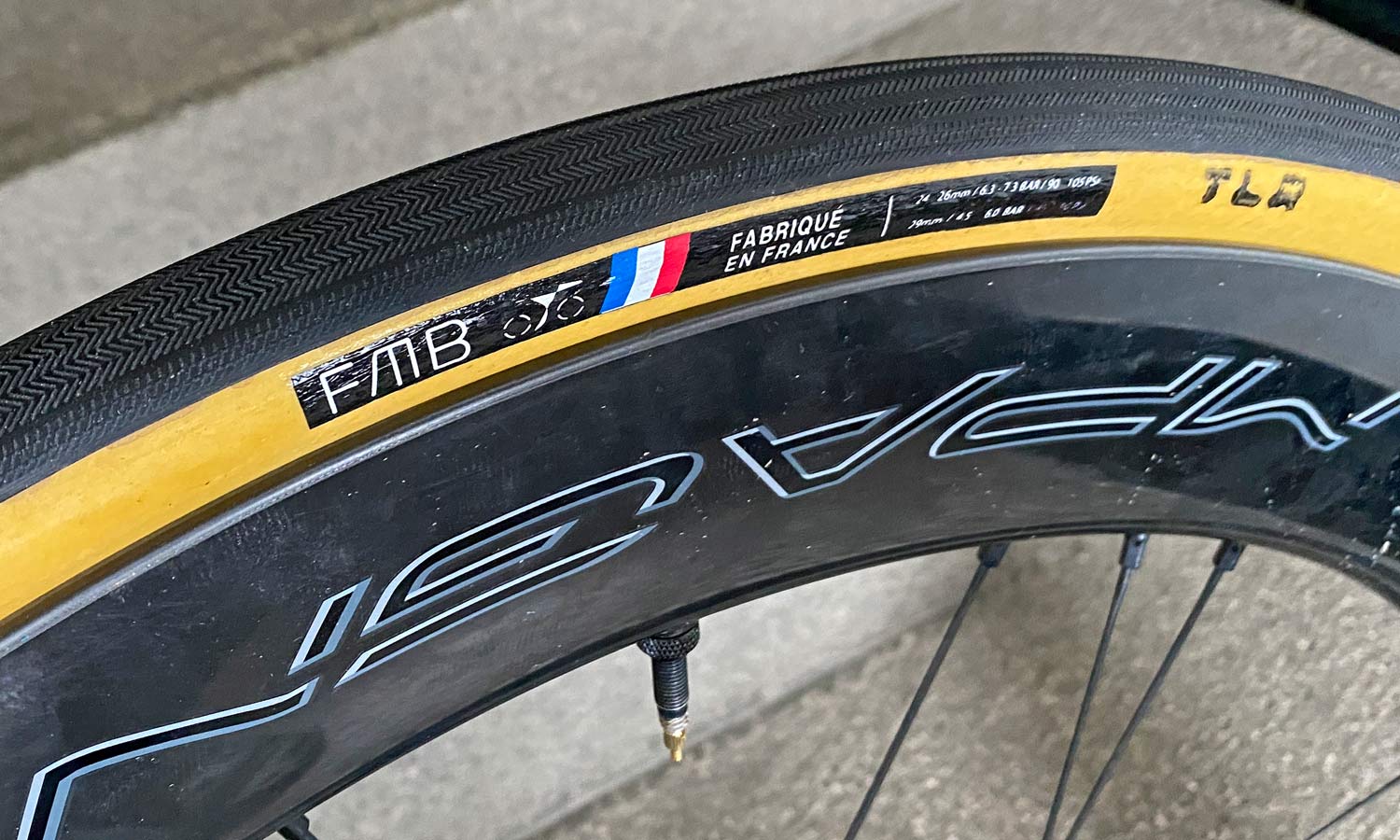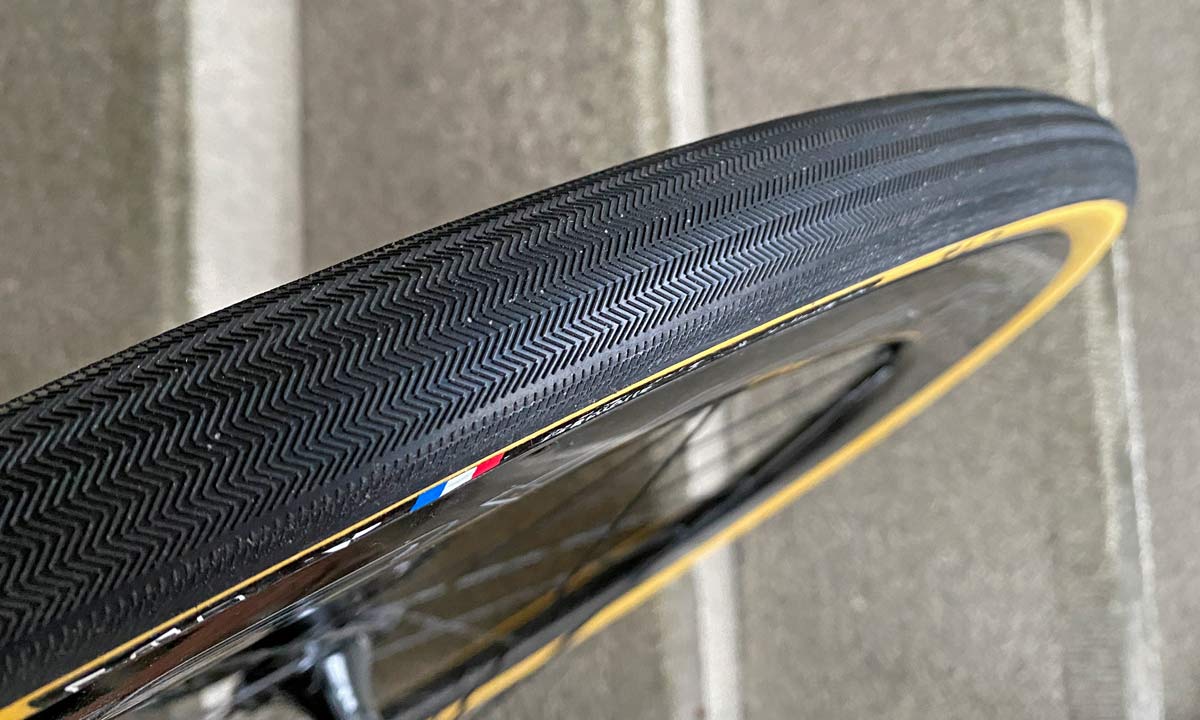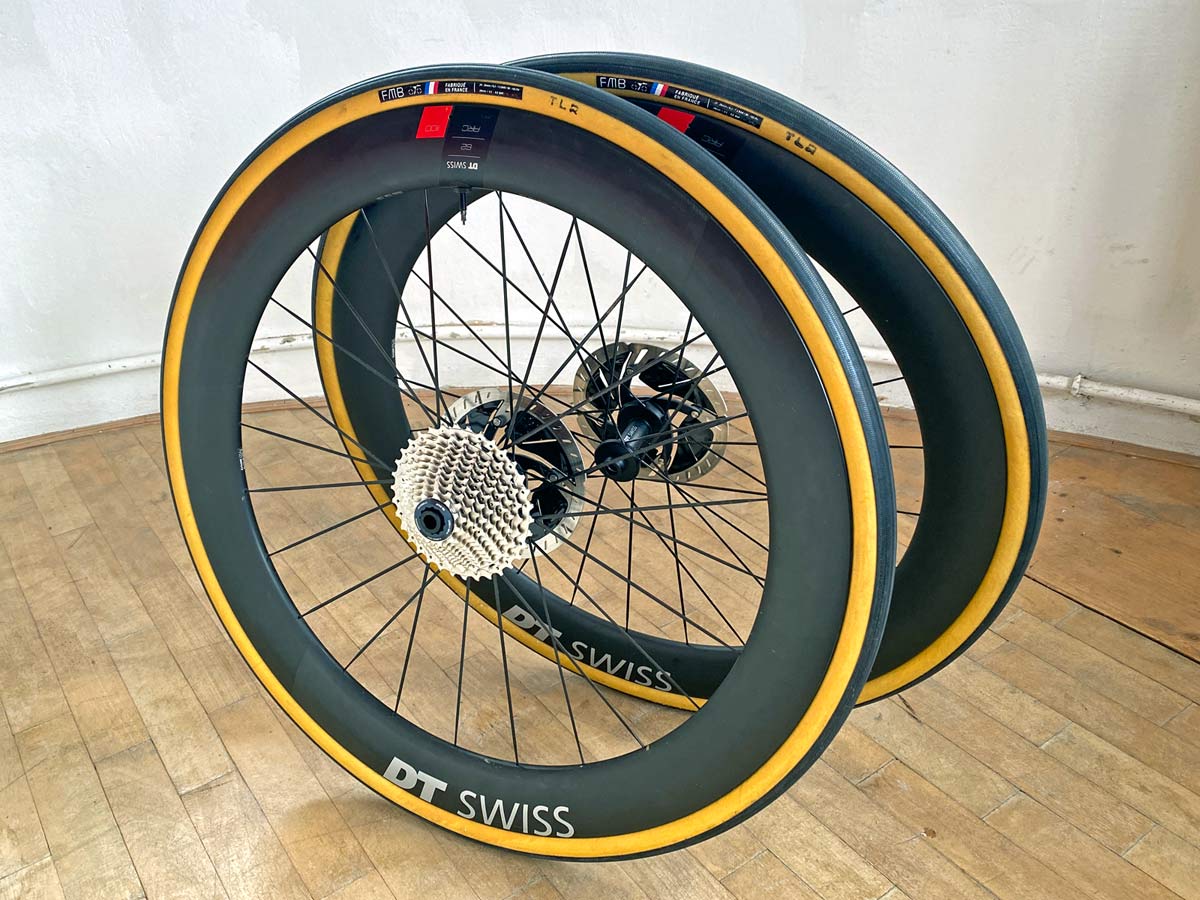A new set of handmade FMB tubeless-ready TLR road bike tires is the latest sign that maybe going tubeless doesn’t require a sacrifice in performance or ride quality relative to conventional race tubulars. These new supple tubeless-ready clincher tires made entirely in a small workshop in northern France are for now limited to just a couple of all-rounder Classics-ready road tires – the Flanders & Cobbles – but hint at a possible broader tubeless offering from the premium tiremaker.
FMB Cobbles 29mm tubeless-ready TLR open tubular road tires
French handmade tire maker FMB is best known for producing race-ready tubulars and supplying them to professionals riding the Spring Classics or racing cyclocross. But already last year they revealed new open tubulars, i.e. a clincher tire option that shared the same fine 330tpi polycotton construction as their pro tubulars. Meant to make the buttery-smooth ride and improved grip of premium handmade tire accessible without the hassle of gluing tubulars, we already suspected that handmade tubeless-ready versions were already in the works.
Tech details
Like those previous non-tubeless clinchers, these two new larger volume TLR tubeless-ready Spring Classics style road tires – the 26mm Flanders & 29mm Cobbles – feature natural latex AND sealant-impregnated casings for durability & air retention.
The TLR tires feature stretch-resistant PBO Zylon beads (similar but higher strength than aramids) that don’t have a prominent blocky shape like most vulcanized tires. But FMB says they are compatible with hooked or hookless tubeless rims, just not sharp-edged rims like ENVE’s. (I personally am reluctant to mount these tires on hookless rims due to their seemingly looser than average fit.)
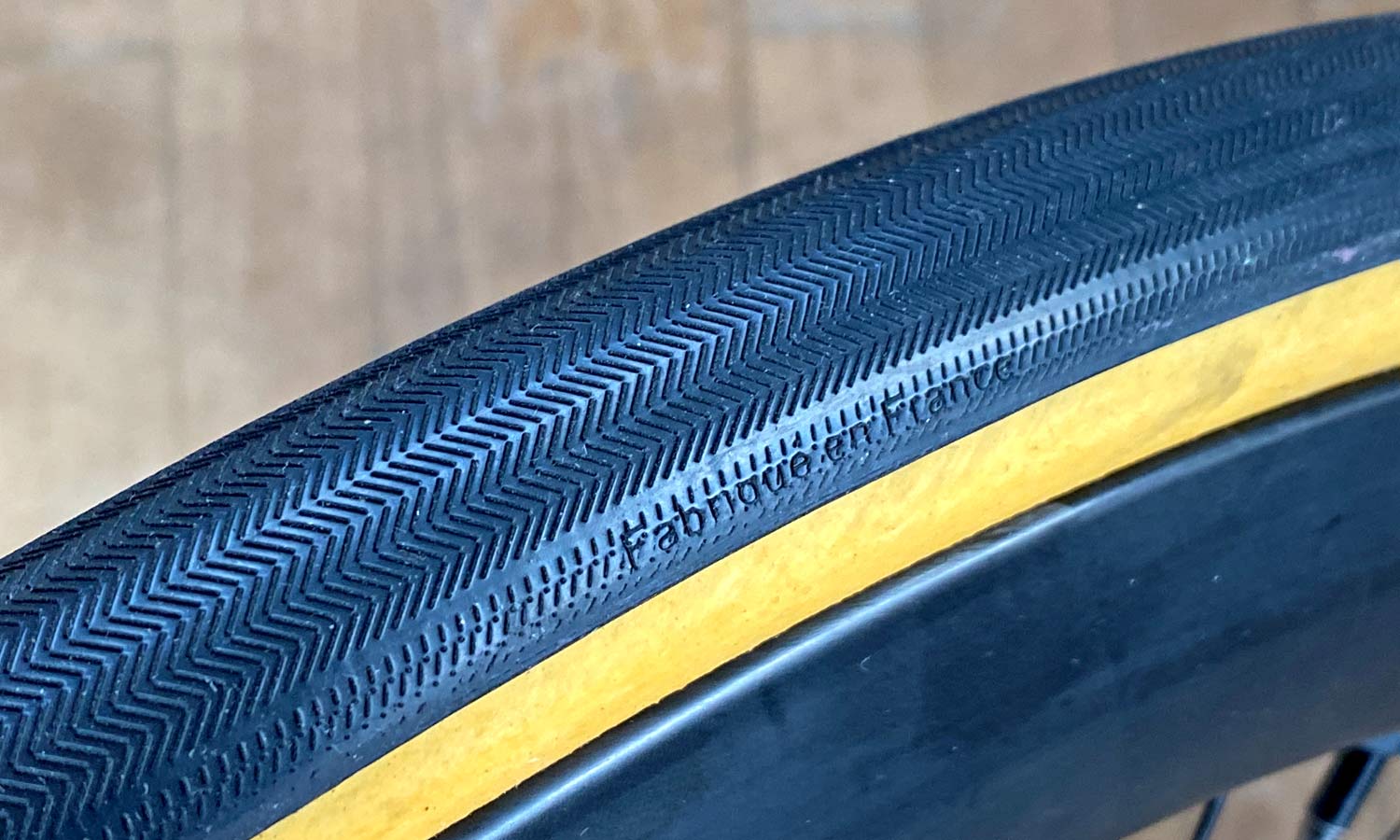 The tubeless tires use FMB’s standard in-house made herringbone rubber tread, molded from a Grip+ rubber compound that claims reliable flat protection. This is a race-oriented tire though, and while FMB rates it for long endurance rides, cobblestone racing, and even training on bad roads, it does not include any additional anti-puncture inserts.
The tubeless tires use FMB’s standard in-house made herringbone rubber tread, molded from a Grip+ rubber compound that claims reliable flat protection. This is a race-oriented tire though, and while FMB rates it for long endurance rides, cobblestone racing, and even training on bad roads, it does not include any additional anti-puncture inserts.
These tires make the conscious choice of prioritizing speed, comfort, and low-rolling resistance over ultimate flat protection. But that’s also one of the main reasons of adding tubeless-ready compatibility, to protect against the more common small punctures.
Pricing, options, real weights & real widths
FMB shares a couple different weight claims for their open tubulars, but it looks like the slightly heavier figures on their website are for the new tubeless-ready TLR road tires -230g for Flanders and 270g for Cobbles. (Their internally circulated tech sheet lists the tube-type Flanders at 220g and Cobbles at 245g.) The tubeless-ready TLR tires also are just a bit more expensive.
FMB Flanders TLR & FMB Cobbles TLR tires both officially retail for 60€ about 5€ more than their tube-type counterparts (although they sell for a few euros less directly from the FMB webshop.)
The two Cobbles TLR 29 samples we got in to test weighed in at an average of 300g (295g & 305g) with a ten gram variance that seems reasonable based on their handmade construction. That’s still 30g over FMB’s claim, likely due to their extra tubeless sealing process vs. the standard tube-type clincher tires?
Our test Cobbles TLR 29 tires also actually measured out a bit wider, at 30.8mm when aired up fully to 6bar/87psi installed on DT Swiss ARC1100 wheels with a 20mm internal hooked tubeless rim profile.
Next steps for FMB TLR tubeless tires
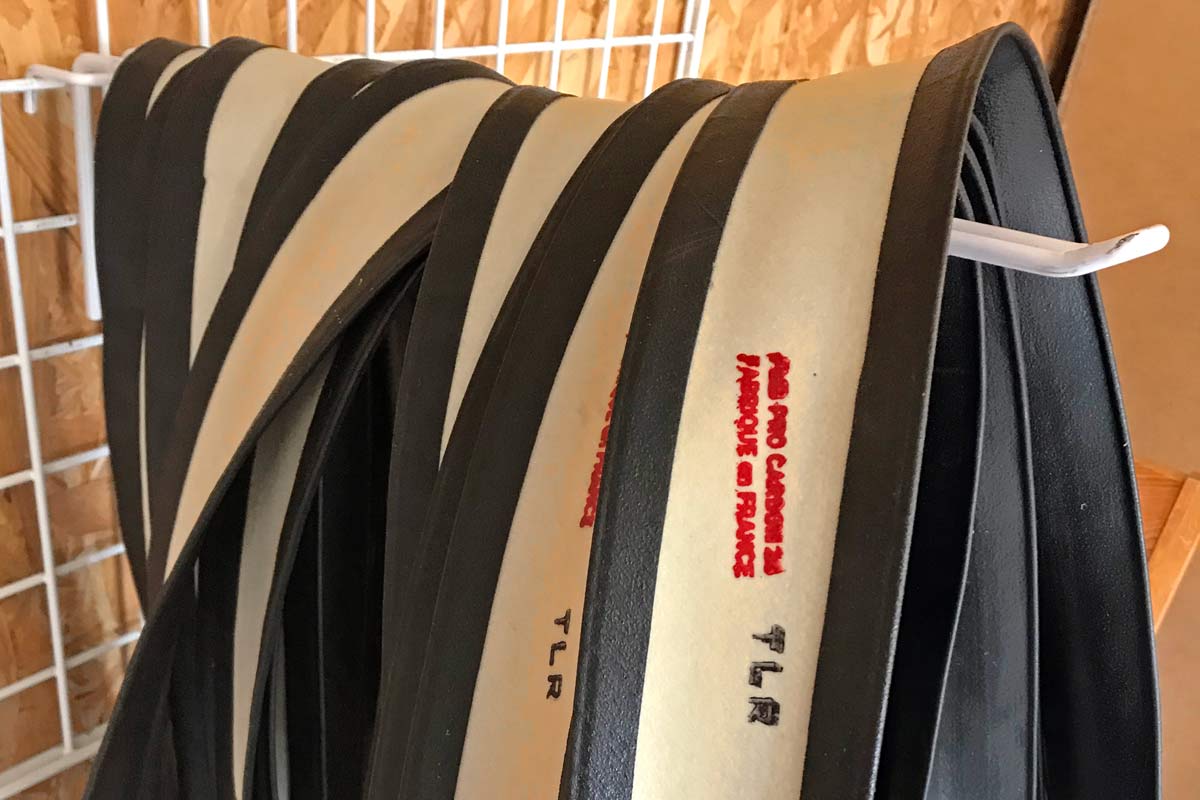
For now, FMB tubeless-ready TLR is officially limited to the Flanders & Cobbles road tires. We have already seen TLR versions of FMB’s all-cotton 26mm Pro Carbon, but they say that production TLR tubeless tires will all use the stronger polycotton blend that is equally as supple, while also being more durable.
FMB has assured us that all of their open tubulars will soon be offered in the new tubeless-ready construction, including cyclocross! Apparently only the 24.5mm Racing road tire won’t get a TLR version.
First Impressions – FMB Cobbles 29 TLR tubeless setup
What are our first thoughts of setting them up tubeless and riding with them? This is where it gets tricky. If you want an easy & hassle-free road tubeless setup, you are likely best to stick with conventional vulcanized tubeless-ready tires. There are plenty of good performance options from the likes of Schwalbe, Continental, Pirelli, Goodyear, and more… just to name a few. But you didn’t read this far to ride on rigid tires, you’re looking for that unmatched fast-rolling, tarmac-smoothing ride quality of handmade tubulars… but without huffing glue fumes or scraping worn-out tires off your rims.
So, buckle up for a tougher install. These tires feel soft in your hands, and once you go to put them on the rims. FMB says that they don’t fit ultra-tight, because they don’t want you to damage them mounting them to your rims with tire levers. That also means that they most likely will not air up and seal on your tubeless wheels without an air compressor.
Out of four hooked wheelsets (alloy & carbon) that I had previously installed conventional tubeless tires with a high-volume floor pump, only on the new DT ARCs could I air up the FMB Cobbles TLRs WITH a Schwalbe/Airshot Tire Booster – none with the floor pump alone.
A high-flow, high-pressure air compressor seated a tire on three of those wheelsets without sealant (add Hunt 4Season & Campagnolo Bora), one wider set not even with the compressor (Hunt Gravel). Adding sealant during the initial bead seat process ultimately made the DT setup easier, but we all know how messy that can get.
The takeaway, your setup results may vary.
So is it worth it?
That’s probably still up to you to decide. I’ve aired them up on the DT wheels, sealed with Stan’s, and only started to ride them a bit. The ride is great – fast and smooth, as hoped. Like the early tubeless Vittoria Corsa Speed tires, it seems the FMBs do lose some pressure over time like tubulars, maybe even more when not ridden for a couple of days.
But so far, cold & wet winter weather has kept me more on trails & gravel, rather than long rides on gritted & salted roads lately. So I’ll have to wait a month or two before I can offer a real-world review on how the FMB TLR tires perform over time.
